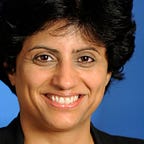I don’t do well at fiction. So, I never wrote a business plan.
“For 15% of your company and $15,000, we will do all the research, and deliver you a business plan in 6 months.”
“Ummm, no, thanks.”
I sat across a table at the offices of an accelerator/incubator that offered to write a business plan for me, for YinzCam, 15 tears ago. They listened to my ideas for the company, they heard the results of our pilot study, and they wanted to help me with a business plan.
It hit me, then, that the people across the table knew the sports industry as little as I did, that they were not connected to industry decision-makers, and that may not know how to price a product they had never seen before in an industry that they didn’t know. They had to go do research, too. Just like me. And, they wanted 6 months to do it, by which time my little startup company would probably be dead in the water.
“Ummm, no, thanks.”
I’ve long believed that a business plan is a work of fiction. It’s based on research, not fact or experiment. It’s a rosy-picture document with a lot of text and lots of graphs. You make up wild conjectures about the size of the market, you show graphs of impressive growth (always exponentially-increasing graphs, mind), you show leaps of revenues being made (always in the millions) every year, you show how you will land lots of customers (always in the hundreds), and you show profits soaring (always, always, always). The thing is, nobody knows. For a new product that nobody has seen before, nobody knows. For a market that is untested for a product or technology, nobody knows. All the research in the world still may not tell you much.
And, so, “Ummm, no, thanks.”
Traditional business plans are written to bolster investor confidence to make a bets. Business plans end up being aspirational, not pragmatic. Business plans are about capturing the soaring hopes of the founders of everything going right, and not capturing the fears of the founders of staying afloat when things go wrong (as they will). Business plans are intended to showcase that the founders have done all the hard work, and that they are on to a good thing. And, now, they want investors to share in said good thing. Here’s the truth — I didn’t know if I was onto a good thing, I was afraid the market looked bleak, I wasn’t sure the demand was there, I wasn’t sure if we would survive, I felt that we were a long shot. Traditional business plans are like campaign promises — they sound great until you have to deliver on them after you win the election.
It’s rare to see a business plan that is pragmatic, that is grounded, that admits ignorance, that shows realistic growth, realistic customer adoption, realistic supply and demand, realistic market capture, realistic pricing, realistic profits, realistic competition, and realistic challenges. Such an unconventional business plan would be cautious, underdog-like, devoid of flights of soaring oratory, and perhaps even uninspiring. It might be discouraging for founders to write such a business plan, with its stark depictions of reality. But, it would be truthful.
I didn’t want to write a work of fiction.
And, so, I never wrote a traditional business plan for YinzCam.
I didn’t focus on chasing investors.
I didn’t focus on chasing funding.
I didn’t focus on wild market projections.
I didn’t focus on exponential-growth graphs.
Instead, I focused on a pilot.
I focused on experiments.
I focused on making mistakes to see what worked.
I focused on involving the customer in building the product.
I focused on my ignorance, and trying to reduce it.
I focused on learning on the job.
I focused on learning about the industry.
I focused on learning our customers’ problems.
I spent days in the field, walking our customers’ miles.
(And, bless them, they let me.)
I told customers I was ignorant, when I was.
(And, bless them, they didn’t laugh me out of the room.)
I asked customers to teach me, when I didn’t know the answer.
(And, bless them, they taught me without judgment.)
I sought the advice of our customers for every brick wall I ran into.
(And, bless them, they gave me unfiltered, loving advice every time.)
I focused on co-creation with our customers.
I focused on an approach that gave customers a say in what we built.
I focused on a product that crowd-sourced our customers’ ideas.
I focused on a business model that rewarded customer innovation.
I focused on a company that was built by customers, for customers.
I obsessed about finding my business plan by living it, not writing it.
And, that ended up being my business plan.
